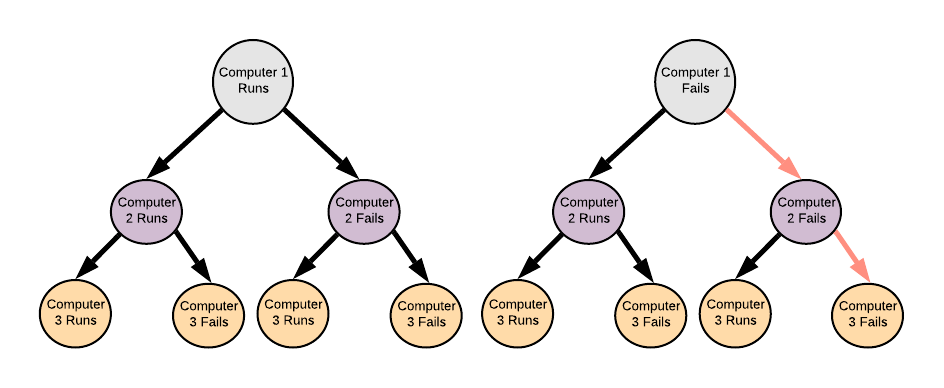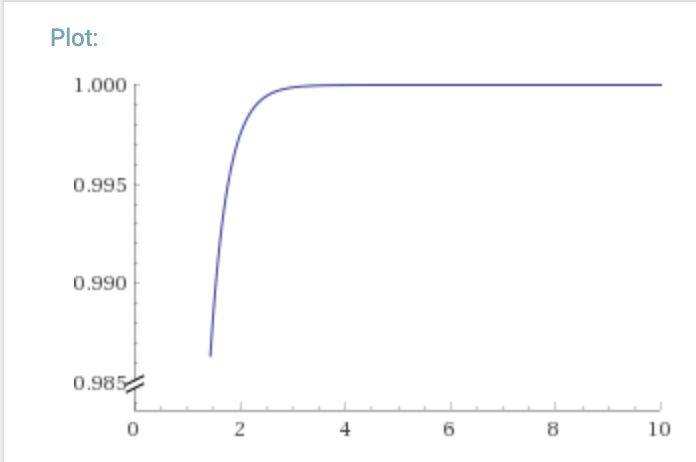Always have backups. Whether that be things in real life or in the cyberspace.
So the ultimate irony is that while I was writing this post I my original writing went away. So.. I’m putting my drafts on Google docs now =/. BUT - the advice is always back up your things, there are things that you must do for backups to be effective. First, make sure you check that the backups are working, and subsequently do simple maintenance on backups.
In cyberspace, I use backup services like DropBox, or use version control like git. But what you have to realize that you can have backups in real life too!
Back in college, one of my good buddies Chris gave me an amazing piece of advice. He was a non-traditional college student who had a stint at the Army, so he definitely knew a few life hacks. He told me that there could be cases where he would get excessively drunk. Of course, bad things can happen if one is ever that drunk…. There’s a possibility that it would be 5 am and he could have lost all his stuff an hour ago. So he always carried a 20 dollar bill beneath the sole of his shoe.
This is really smart. So this is what I started doing, and I do have some sense of safety with the backup. Often times back in college, if I didn’t bring my wallet, I’d use that bill to go grab a drink. Nowadays, I also carry around a 20 dollar bill on the back of my phone too - it’s useful, mainly on the principle that you forget about it. It’s nice to know that if you get robbed or just forget all your stuff, you still have some cash to fall back on. Or to buy metro card in New York City =D.
In general, if you can afford it, it’s nice to have duplicate copies of all your necessities. It could be a hassle or be costly now, but it will save dividends on that off chance that your first item goes missing, or if you cannot acquire it anymore. An instance of this is when manufacturers discontinue your favorite products. This unfortunately happened with my favorite mouse - G303 Apex. Logitech stopped making it, and the price of the mouse went from $30 to around $200. I still regret not buying extra ones… If money isn’t a concern, it’s good to stock up on your favorite items goods.
Other things I back up in life:
Computer charger? I keep one in my backpack but also one in my workplace and office. I also carry around a portable battery pack inside my jacket, because one time I got stranded in the middle of Manhattan with a dead phone. Nope, not doing that again.
Earphones? I have a backup earphone in my main carry gym bag as well as my backpack. Also one in my keychain pouch.
Glasses? I’m effectively blind if I don’t have them. There’s a spare pair in my backpack as well as my car.
Recently, I’ve been going to the gym, and what always irks me is that I always forget something. I forget my workout shirt one day. I’ve also forgotten my underwear as well. Then the deodorant. Then the towel. All of these are non-critical. There are workarounds… but the workarounds are not fun either.
At a certain point, I thought… damn this is stupid. Enough is enough. I allocated a separate compartment in my bag so I have a spare set of everything. Now I carry two pairs of underwear, two pairs of socks, two bars of soap, etc. So far the problems have went away, and I think it’ll be fine as long as I do some maintenance on my gym bag.
But with respect to the backups, what’s fascinating is that if you’re relying on having at least one object to be functional, it only takes a one critical path for failure. All other paths will turn out to be a good outcome. This can be modeled as a tree!
Consider this toy problem: we want at least one computer to be functional at one time. It would look something like this if we had three computers:

For catastrophic failure where nothing is available, there’s only one branch that you have to take that will cause a catastrophic failure. For each computer/(or any kind of object), you are adding another layer of the 2^n tree. Thus, your probability of failure would be 1 - p^n, where p is the probability of failure of that one thing(Of course, we’re making a lot of assumptions here).
Furthermore, if we assume p = 0.05. The graph of it would look like this:

This, depending on your use case, you should decide on how many copies or n backups to have. The failure rate will determine the reliability. In general, What’s fascinating is the drop from adding one additional backup - 0.95 vs. 0.9975.But at a certain point backups aren’t worth it. It’s up to you the designer to choose that cutoff point. For me and my life, usually 2 backups seem to be a good rule of thumb.